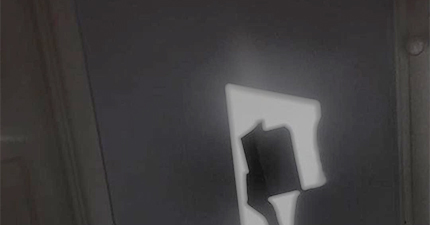Squares between two planets or points in a chart happen when those planets or points are in the same modality and signs of the opposite sect. Fire and air signs are considered to be diurnal while earth and water are considered nocturnal. So, squares happen when two objects are trying to do very different things at the same time.
This means that there are three types of squares: cardinal, fixed, and mutable. Cardinal squares are between the signs of Aries/Libra and Cancer/Capricorn. Fixed squares are between Leo/Aquarius and Taurus/Scorpio. Mutable squares are between Sagittarius/Gemini and Virgo/Pisces. When you have planets in each of the four signs associated with a modality, you end up with a grand cross.
I have a hypothesis: not all squares are created equal.
This has actually come up in my astrology education before. Stephen Arroyo once noticed that fixed signs tend to cluster together, which seems a bit counterintuitive since squares are supposed to cause tension, conflict, and change. However, I’ve noticed that there’s some specific things that distinguish each of the types of squares from one another.
For this article and in general, I only consider in-sign squares to be valid, meaning that squares only happen when they happen in signs that square each other. For example, I wouldn’t consider two planets at 29º Leo and 1º Gemini to be squared, even if they’re approximately 90º away from each other.
Mutable Squares
If you look at the ruling planets of the signs involved in each type of grand cross formation, you’ll notice that the cardinal signs are ruled by the Moon, Saturn, Venus, and Mars. You’ll notice that the fixed signs are ruled by the Sun, Saturn, Venus, and Mars. In other words, cardinal and fixed grand crosses are ruled by the luminaries, Saturn, Venus, and Mars.
That’s not the case for the mutable signs. The mutable signs are only ruled by Mercury and Jupiter. That means that, if you are Gemini, Virgo, Sagittarius, or Pisces rising, you have all of your angular houses ruled by two planets.
This makes mutable squares behave a bit differently than cardinal or fixed squares. If you have a mutable square, then you either have a square between two planets that share a ruler or you have a square between Mercury and Jupiter. Mutable squares are the only types of squares where it is possible that both planets in a square share a ruler. This would be like two tenants who share a landlord.
I find this super interesting. Of course, how that square behaves in your chart will be determined by the condition of the ruling planet.
If your mutable square happens to be ruled by both Mercury and Jupiter, in many ways it can behave a bit like an opposition. Oppositions in astrology are loaded since they always happen in signs that are dialectically opposed. The luminary—Saturn opposition is about the hero’s journey, the Venus—Mars opposition about the love story, and the Mercury—Jupiter opposition about the dialectic between fiction and reality.
Fixed Squares
Fixed squares are different from both mutable and cardinal squares because the signs involved in the square will be either in antiscia or contra-antiscia. When a planet is in antiscia, they’re at the same distance from the celestial horizon. When they’re at contra-antiscia, they’re at the same distance from the horizon still but in opposite directions. For more information about this, you can go look at the articles that I have on antiscia in my Learn section.
Though you calculate the degree of antiscia and contra-antiscia by subtracting the degree of one planet from 30º and looking for it in the signs that it sees or hears, all fixed signs are still considered to have an antiscia or contra-antiscia relationship to one another. That means that they are at the same distance from the equinox or the solstice.
Planets in antiscia or contra-antiscia work together. They’re connected in the z-axis that a 2D natal chart hides. That means that fixed sign squares are connected in the third dimension.
Fixed sign squares are the only types of squares that see and hear each other through antiscia. Cardinal and mutable squares don’t have that relationship to one another since cardinal signs only shoot antiscia to mutable signs and vice versa. This is something that is unique to fixed sign squares. It might explain what Stephen Arroyo noticed about fixed signs. They seem to share some kind of quiet understanding with one another. That’s because, while their signs are squared in one dimension, they’re also noticing and perceiving each other in another.
Cardinal Squares
Well, cardinal squares are really about the solstices and equinoxes. While mutable squares might be mediated through shared rulership and fixed signs squares are mediated through antiscia or contra-antiscia relationships, cardinal signs...just square each other. And they square each other in such a fundamental way. While Aries—Libra are about an equality between the day and night, Cancer and Capricorn are about this dichotomy between light and dark.
Cardinal squares basically have very different vocabularies. Aries and Libra might think about issues in terms of visibility, since they’re at the equinoxes, Cancer and Capricorn might think of things in terms of temperature, since they’re at the solstice points.
I think that cardinal signs really provide us with the most basic understanding that we might have of squares in a chart. Since the thema mundi begins the ascendent at 15º Cancer, the horoscope is squared by Mars. Ptolemy also characterizes the square as being like Mars. We tend to think of squares are challenges and as disruptive—all things that are associated with Mars.


